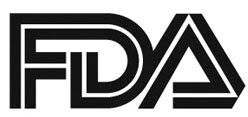FDA Grants Priority Review to Tazemetostat in Relapsed/Refractory Follicular Lymphoma
The FDA has granted Priority Review to the New Drug Application for tazemetostat as treatment for patients with relapsed or refractory follicular lymphoma who have received at least 2 prior lines of systemic therapy. The drug will now be considered for accelerated approval and the application was designation as a supplemental NDA with a Prescription Drug User Fee Act target action date of June 18, 2020, Epizyme, Inc announced in a press release.

The FDA has granted Priority Review to the New Drug Application for tazemetostat (Tazverik) as treatment for patients with relapsed or refractory follicular lymphoma (FL) who have received at least 2 prior lines of systemic therapy. The drug will now be considered for accelerated approval and the application was designation as a supplemental NDA (sNDA) with a Prescription Drug User Fee Act (PDUFA) target action date of June 18, 2020, Epizyme, Inc announced in a press release.1
Data from the phase II study investigating the safety and efficacy of tazemetostat as monotherapy in patients with FL, which were presented at the 2019 American Society of Hematology (ASH) Annual Meeting, served as the basis for the NDA.
As of the data cutoff date, August 9, 2019, treatment with tazemetostat achieved an objective response rate (ORR) of 69% in the group of patients with anEZH2mutation and 35% in those who wereEZH2wild type. Of the responses observed, the best response was complete response (CR). According to the assessment of an Independent Review Committee, 13% of patients withEZH2mutations have a CR (n = 6), 56% had a partial response (PR; n = 25), and 29% had stable disease (SD; n = 13). Two percent of patients in theEZH2-mutated group had progressive disease (PD; n =1). In theEZH2wild-type group, 4% of patients had a CR (n = 2), 31% had a PR (n = 17), 33% had SD (n = 18), while 22% had PD (n = 12). The media duration of response (DOR) was 10.9 months among patients with anEZH2mutation and 13.0 months for those withEZH2wild-type disease. Treatment also led to a median progression-free survival (PFS) of 13.8 months in patients with anEZH2mutation versus 11.1 months in those who wereEZH2wild type. Responses were ongoing at the time of data cutoff in 29% of patients withEZH2mutation (n = 13), but no patients in theEZH2wild-type group were continuing to respond at that time. Median overall survival (OS) was not yet reached in either cohort.2
In terms of the safety profile of tazemetostat, the drug was found to be tolerable in patients with FL. The most frequent grade ≥3 treatment-related treatment-emergent adverse events (TEAEs) were thrombocytopenia (3%), anemia (2%), asthenia (1%) and fatigue (1%). Eight percent of patients discontinued treatment as a result of TEAES and dose reductions were required in 9% of patients. No treatment-related deaths occurred during the study.
A total of 45 patients were included in theEZH2mutation cohort and 54 patients were included in the wild-typeEZH2cohort. Patients in both groups received tazemetostat 800 mg orally twice daily. The primary end point of the study was ORR and the secondary end points were DOR, safety and tolerability, OS, and pharmacokinetics.
To be included, patients were required to have measurable disease, an ECOG performance status of 0 to 1, a life expectancy of at least 3 months, and adequate liver, and bone marrow function. Individuals were not eligible to join the study if they had prior exposure to an EZH2 inhibitor, chemotherapy, immunotherapy, or radiotherapy, had major surgery within 4 weeks of starting treatment in the study,or had any conditions that may interfere with tazemetostat treatment.
Tazemetostat is an oral, potent, first-in-class EZH2 inhibitor, which is currently under investigation in multiple clinical trials for the treatment of solid tumors like epithelioid sarcoma and other INI1-negative tumors.
To support the full approval of tazemetostat in FL, the developer had launched a single, global, randomized, adaptive trial of tazemetostat in combination with lenalidomide (Revlimid) and rituximab (Rituxan) as second- or later-line treatment of patients with FL. Currently, the trial is in the safety run-in portion, and the phase Ib/III trial will advance to the efficacy portion this year.1
“If approved, we believe Tazverik could become an important new option for these patients and their physicians. We are thrilled with the FDA’s acceptance of our application as an sNDA with Priority Review, for Tazverik for patients with relapsed or refractory FL. We look forward to working with the Agency during their review and would like to thank the many patients, caregivers, and physicians whose contributions have been invaluable in bringing us to this point,” Shefali Agarwal, MD, chief medical officer of Epizyme, said in a statement.
References
- Epizyme announces FDA acceptance of New Drug application for filing with priority review for Tazverik (tazemetostat) for the treatment of follicular lymphoma [news release]. Cambridge, Massachusetts: Epizyme, Inc; February 14, 2020. https://bit.ly/2SrXK7m. Accessed February 14, 2020.
- Epizyme presents updated phase 2 data at the 2019 ASH Annual Meeting supporting planned tazemetostat NDA submission for follicular lymphoma [news release]. Cambridge, Massachusetts: Epizyme, Inc; December 7, 2019. https://bit.ly/2OSjAP9. Accessed February 14, 2020.
Examining the Non-Hodgkin Lymphoma Treatment Paradigm
July 15th 2022In season 3, episode 6 of Targeted Talks, Yazan Samhouri, MD, discusses the exciting new agents for the treatment of non-Hodgkin lymphoma, the clinical trials that support their use, and hopes for the future of treatment.
Listen